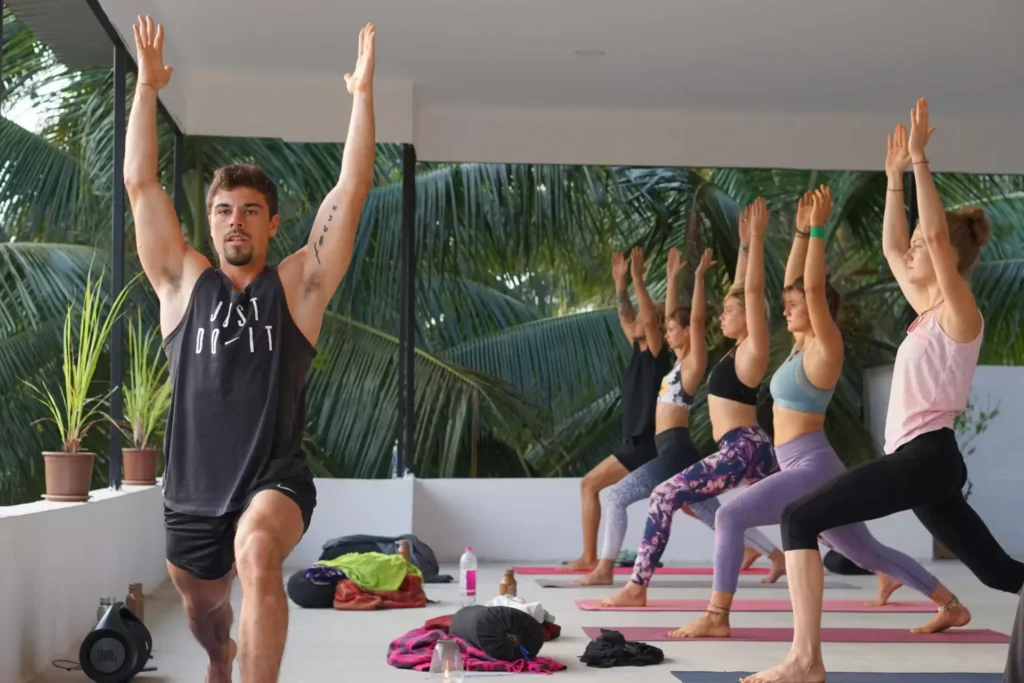Dear friends and fellow yogis, please take a moment to join us as we have an open and heartfelt conversation about what it truly means to be a full-time yoga teacher.
At our yoga center, we’ve noticed a significant lack of transparency within the yoga community. Many of us are captivated by the beautiful Instagram pictures showcasing yoga teachers living seemingly perfect lives, making us believe they’re earning thousands of dollars every month. However, the reality often tells a different story.
Over recent months, we’ve engaged in numerous conversations with yoga instructors who are struggling to make ends meet. They find it challenging to pay their bills, can’t afford the gas to drive to their next class, and feel disheartened as they compare themselves to others. The constant hustle leaves them feeling frustrated, burnt out, and questioning their path as yoga teachers.
It’s time to be real about it. We want to have an honest discussion about what it’s really like to be a full-time yoga teacher. Instagram might paint a glamorous picture, but in real life, teaching yoga full-time is incredibly challenging. Yet, despite the hardships, it remains one of the most rewarding careers. We firmly believe that a dedicated yoga teacher can change lives and foster a strong, supportive yoga community.
Don’t quit your day job just yet
The dream of earning a comfortable living solely through teaching yoga classes can be enticing. You might imagine earning 40€ per class and teaching 20 classes a week, which adds up to 800 € weekly or 3,200 € monthly. It seems manageable at first glance.
However, consider the unexpected. If you take a week off for vacation or fall ill, your income drops significantly. An injury or a major life event can result in no income for an extended period. Therefore, it’s crucial not to quit your day job prematurely. Continue teaching yoga part-time while building additional revenue streams.
Many studios don’t pay a decent hourly rate
Teaching yoga involves more than just the class time. Each one-hour session often demands at least two hours of your time, including preparation, travel, and post-class engagement. If you’re earning 40 € per class, your hourly rate effectively drops to 20 €.
Furthermore, teaching a high volume of classes weekly to make ends meet is unsustainable. Many teachers push themselves to teach 25-30 classes a week, leading to physical and emotional exhaustion. This workload is not feasible in the long run, and it’s important to recognize and respect your limits.
Yoga teacher burnout is real
The mental and emotional energy required to teach yoga can lead to burnout, especially after several years of consistent teaching. While physically you might be capable of teaching multiple classes per week, maintaining the energy and inspiration to do so can be challenging.
Some teachers try to combat burnout by taking additional training courses, which can be costly. Instead, consider diversifying your offerings. Hosting workshops and events can be a great way to generate more income with less frequent demands on your daily energy reserves.
Injuries are the hidden hazard
Injuries among yoga teachers are more common than many realize, particularly for those practicing intense styles like vinyasa for many hours each week. Despite advocating for self-care, the pressure to hustle can lead teachers to ignore their own injuries.
This was my experience as well. I endured a torn hip labrum for years before the pain became unbearable, leading to surgery and a significant shift in my business approach. During my recovery, I had to rethink how I could sustain my yoga career long-term without compromising my health.
Creating a sustainable yoga career
After facing these challenges, I developed three methods to create a sustainable income while continuing to impact my community positively:
- Expand beyond regular classes. Offer workshops, retreats, and special events that provide higher income for less frequent commitments.
- Create online classes, courses, or memberships that allow you to reach a wider audience without the physical demands of in-person teaching.
- Connect with other yoga teachers to share experiences, support each other, and collaborate on projects.
We hope this conversation helps you navigate the realities of being a full-time yoga teacher. Remember, it’s a journey filled with both challenges and rewards. Stay true to your passion, and don’t hesitate to reach out for support within our yoga community.

